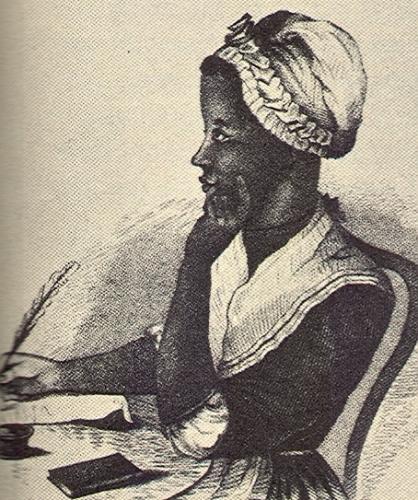 |
LITR 4231 Early American
Literature Sample Research Posts 2014 (research post assignment) Research Post 2 |
 |
Elizabeth Sorensen
Quanah Parker
Son of Peta Nocona and Cynthia Ann Parker, Quanah Parker was born in 1845
on Elk Creek in Oklahoma (Hosmer, 2010). During his early childhood, Quanah’s
tribe was attacked by Texas Rangers, leading to his mother’s capture and his
father’s death. This event left him an orphan, so he sought out refuge with the
Quahada Comanches of the Llano Estacado (Hosmer, 2010).
During his time with the Quhada Comanches, Quanah “became an accomplished
horseman and gradually proved himself to be an able leader” (Hosmer, 2010). His
new tribe refused to move to a reservation as per the Medicine Lodge Treaty and
as a result they became fugitives on the Staked Plains. This is where the tribe
hunted buffalo and raided settlements for the next few years until the buffalo
soldiers began decimating their only form of subsistence (Hosmer, 2010).
Determined to maintain their independence, the Quahada, under the guidance of
Quanah, formed a multitribal alliance with the Cheyennes, Arapahoes, Kiowas, and
Comanches. This group was dedicated to expelling the hunters from the plains
(Hosmer, 2010). The band of 700 Indians attacked the twenty-eight buffalo
soldiers at Adobe Walls, resulting in disaster for the allied Indians. After the
devastation, the alliance ended and the Quahada Comanches were forced to
surrender their independence and move to the Kiowa-Comanche reservation in
southern Oklahoma.
Adjustment to reservation life was incredibly difficult for most Indians;
however, Quanah made the transition with such ease that federal agents “seeking
a way to unite the various Comanche bands, named him chief” (Hosmer, 2010) and
the tribes agreed to this action. Parker was an assimilationist, so he strongly
supported cooperation with whites. He strongly supported education, agriculture,
and ranching on the reservation by communicating extensively with the
government. Moreover, he served as a “judge on the tribal court, an innovation
based on county tribunals; negotiated business agreements with white investors;
and fought attempts to roll back the changes instituted under his direction”
(Hosmer, 2010). Beyond this, Quanah approved the establishment of a Comanche
police force which he believed would help the Indians manage their own affairs.
Through shrewd investments in the
Acme and Pacific Railway, Quanah Parker became a very wealthy man. As a
testament to his successful conversion to white ways, “Parker was a close
associate of several prominent Texas Panhandle ranchers, counted Theodore
Roosevelt as one of his friends, and was frequently interviewed by magazine
reporters on a variety of subjects, including political and social issues”
(Hosmer, 2010). Despite this, Quanah did not completely forego his Indian
culture nor did he force his followers to give up their beliefs. He kept all
seven of his wives, refused to cut his braids, rejected Christianity, and was a
part of the peyote-eating
Native American Church.
Eventually, in 1901, the federal government voted to break up the Comanche-Kiowa
reservation into individual holdings and open it to outside settlements. For
the remaining years of his life, “Parker operated his profitable ranch,
continued to seek ties with whites, maintained his position as the most
influential person among the now-dispersed Comanches, and was named deputy
sheriff of Lawton, Oklahoma by his people in 1902" (Hosmer, 2010). On February
23, 1911, “Quanah Parker, the most famous chief of the Comanche Indians died in
his home of pneumonia” (New York Times, 1911). His obituary states that “He
possessed intelligence far above the members of his other tribe” and was
“idolized by his people” (New York Times, 1911). At his funeral, Quanah was
dressed in full Comanche regalia and was buried beside his mother, Cynthia Ann
Parker, in Post Oak Mission cemetery in Oklahoma. In 1957 Quanah and Cynthia Ann
Parker were reburied at Fort Sill Post Cemetery at Lawton, Oklahoma, due to the
expansion of a missile base. On August 9, 1957, Quanah was buried with full
military honors in a section of that cemetery now known as Chief's Knoll.
Sources
Brian C. Hosmer, "PARKER, QUANAH," Handbook of Texas Online(http://www.tshaonline.org/handbook/online/articles/fpa28),
accessed April 28, 2014. Uploaded on June 15, 2010. Published by the Texas State
Historical Association.
QUANAH PARKER DEAD. 1911. New York Times (1857-1922), Feb 24, 1911.
http://search.proquest.com/docview/97180891?accountid=7108 (accessed April 28,
2014).
|
|
|
|

